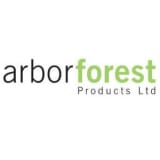This informal CPD article, ‘What’s in the core? A guide to composite decking profiles’, was provided by Arbor Forest Products, one of the largest independent timber importing businesses in the UK, providing outstanding service and distribution to merchants.
A guide to composite decking profiles
When it comes to traditional timber decking boards, the key questions specifiers should be asking relate to the manufacturing process – ultimately leading to the quality of the product – and how sustainably the timber has been sourced. Fortunately, timber’s sustainability is relatively easy to verify due to accreditations such as the Forest Stewardship Council (FSC) certification, and timber producers should be open about their processes. Similarly, leading composite brands are very open about their sustainability credentials so users can be confident that they’re making a sustainable choice with decking boards comprising recycled materials.
However, as the popularity of composite decking continues to see exponential growth, new products are regularly entering the market – of varying quality. Capitalising on the desire of customers who are interested in composite decking but have a limited budget, some manufacturers are selling boards at low price points, but with a compromise on quality. As more composite products saturate the market, here’s a guide to composite decking profiles – what you should look for, and what to avoid.
Solid and capped boards
These boards are the gold standard of composite decking, and although the outlay is higher, they’re the best option for long term value. Solid and capped boards are favoured by leading composite decking brands as well as installers, as they offer the highest level of performance, protecting against colour fade, stains, scratches and other damage – even with minimal maintenance.
The solid core offers the highest level of structural integrity and ‘capped’ refers to the addition of a protective outer shell, meaning that these types of boards should come with a manufacturer’s warranty of at least 25 years or even 50 years for residential decks and 10 years for commercial decks. This type of composite decking board can come with or without grooves on both sides, designed to accommodate hidden fixings for a sleek overall finish.
Solid and uncapped boards
Also available without or without grooves for fixings, solid and uncapped composite deck boards do provide some benefits – particularly in terms of structural performance and integrity due to their solid core. However, these boards don’t feature the added protective outer layer, meaning that they’re more prone to colour fading and other signs of wear and tear. This affects the overall appearance of the deck in the medium-term, so when purchasing this type of board, it’s important to choose trusted brands with a manufacturer’s warranty for peace of mind.
Scalloped boards
Offered by some leading composite decking manufacturers, scalloped boards feature a solid core but with only one useable side. This means that – when the board is also capped – they provide structural integrity and fade resistance at a lower price point, making them a popular choice for those looking for a cost-effective composite decking solution. Uncapped scalloped boards also provide product performance, but they are subject to earlier colour fade. It’s therefore important to purchase these from trusted brands that have undertaken performance testing and certification.
Hollowcore boards
Although they tend to offer a cheaper solution that may be easier to install due to being lighter than solid core deck boards, specifiers should be cautious when purchasing boards with a hollow core. These boards don’t offer the same level of strength as solid core boards, making them unsuitable for commercial decks that will see heavy footfall. However, when they’re also capped, hollowcore boards from trusted brands – with a manufacturer’s warranty – may offer a cost-effective solution for residential decks that won’t experience much traffic.
It is important to avoid decks that have a hollow core and are uncapped too. While the low price point may be tempting for both the customer and professional, these boards are subject to structural failure and significant damage in terms of scratches, stains and colour fading. This short lifespan can incur the cost of replacing the deck in the short term, meaning the initial cost is in fact too good to be true.
With this in mind, it’s important to consider the cost-benefit of each type of composite decking board on a project-to-project basis with factors like application and budget in mind – but always choose a trusted supplier with a comprehensive warranty for added protection.
We hope this article was helpful. For more information from Arbor Forest Products, please visit their CPD Member Directory page. Alternatively, you can go to the CPD Industry Hubs for more articles, courses and events relevant to your Continuing Professional Development requirements.













